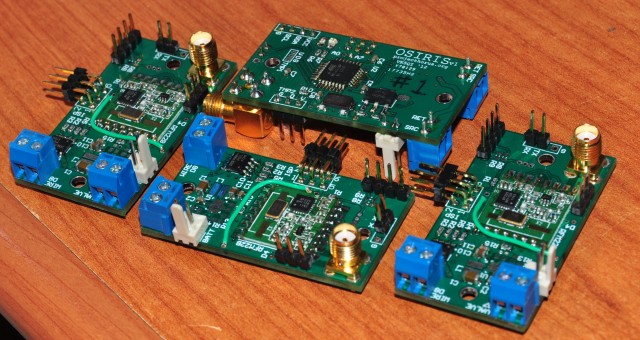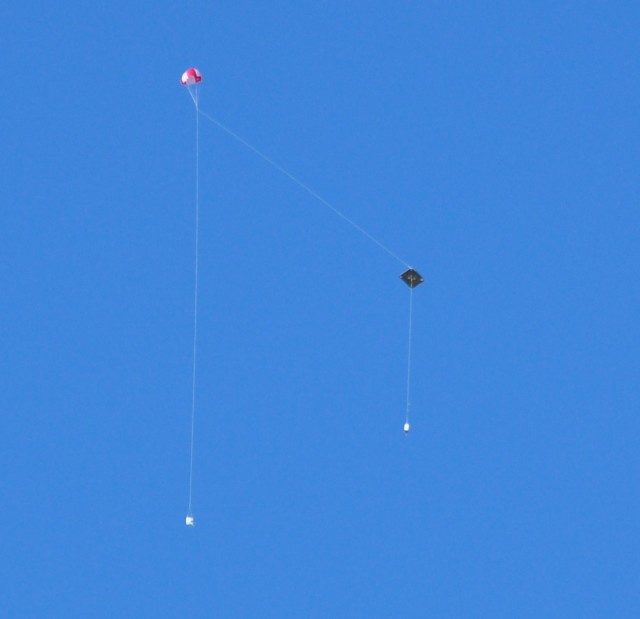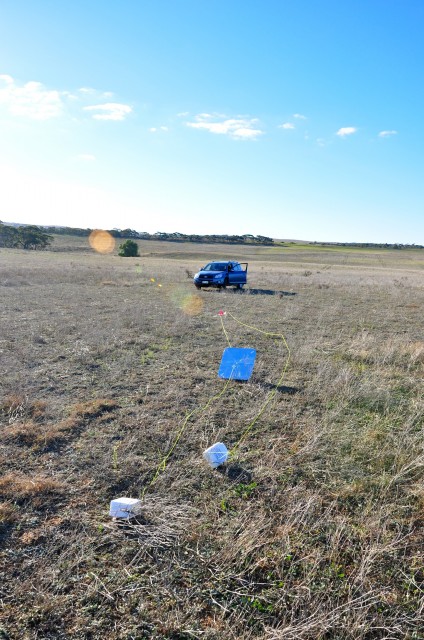Horus 24
Technical information:
| Launch date | 15/5/2012, 04:08 UTC |
| Landing date | 15/5/2012, 06:06 UTC |
| Flight duration | Approx 2 hours |
| Launch site | -35.1022, 138.8257 |
| Landing site | -34.9337,В 139.2580 |
| Flight path | Web, KMZ |
| Distance travelled | 43.6 km |
| Average speed | 22.3 km/h |
| Maximum speed | 114 km/h |
| Maximum altitude | 13,625В m |
| Average ascent rate | 3.6 m/s |
| Impact speed | 2.5 m/s |
| Flight computer | MicroNut Flight Computer |
| Additional payloads | Osiris Cutdown Payload |
| Primary radio TX |
Radiometrix NTX2 25mW (RTTY) |
| Telemetry | 300 baud RTTY, CRC16 checksum |
| Tracking | Ground stations (distributed listener), 1 chase car, web based tracker |
Details:
Horus 24 was the first full systems test of the project's new cutdown payload. Following with the Egyptian mythology theme, this payload was given the name 'Osiris' - the god of the dead.
The Osiris payload had been flown on Horus 23, as a test of the radio uplink system, but this was the first time it was flown with the intention of cutting the payload away from the balloon. To achieve this, the Osiris payload was situated just below the balloon, with the radar reflector, parachute, and main telemetry payload (a trusty Micronut) below it. On command from the ground (via a 500 baud GMSK link), the Osiris payload would apply power to a nichrome wire wrapped around the line above the payload, melting it and cutting the payloads away from the balloon. Apart from the cut-down command, the Osiris payload also has a few other commands, including a 'ping' command. This allows link checks to be performed with different power levels.
As the launch was on a week-day, the launch team was very small: one chase car, with Terry VK5VZI driving and Mark VK5QI navigating and handling telemetry. Unfortunately, a side-effect of a small launch/chase team is a lack of photographs.
The launch proceeded as normal, with an intentionally slow ascent rate allowing the balloon to drift away from the Adelaide hills area, anВ unfavourableВ landing zone. With the balloon launched, the chase team set out towards Mannum, which was under the predicted flight path. While driving, the Osiris payload was 'pinged' repeatedly with different transmit power levels, conforming it was still responding to commands. It was found that only very small amounts of transmit power (500mW) were required to reliably contact the payload from the ground.
As the payload rose above 13km, the chase team decided to terminate the flight and attempt to land the payload in a field near the Murray Bridge to Mannum highway (the current predicted landing location).
The cutdown was successful, and the payload started it's descent. The descent was quite slow, allowing observation of how the relatively heavy Osiris payload affected the rest of the balloon train.


